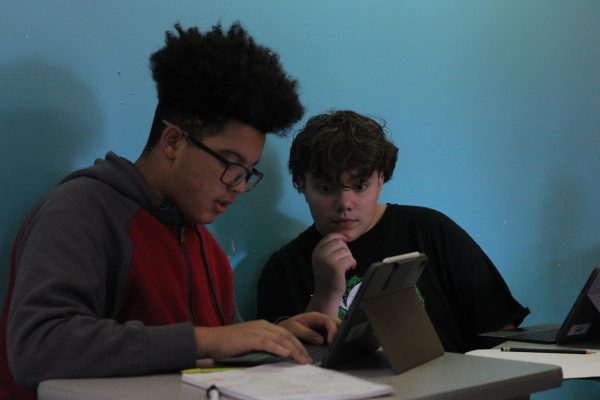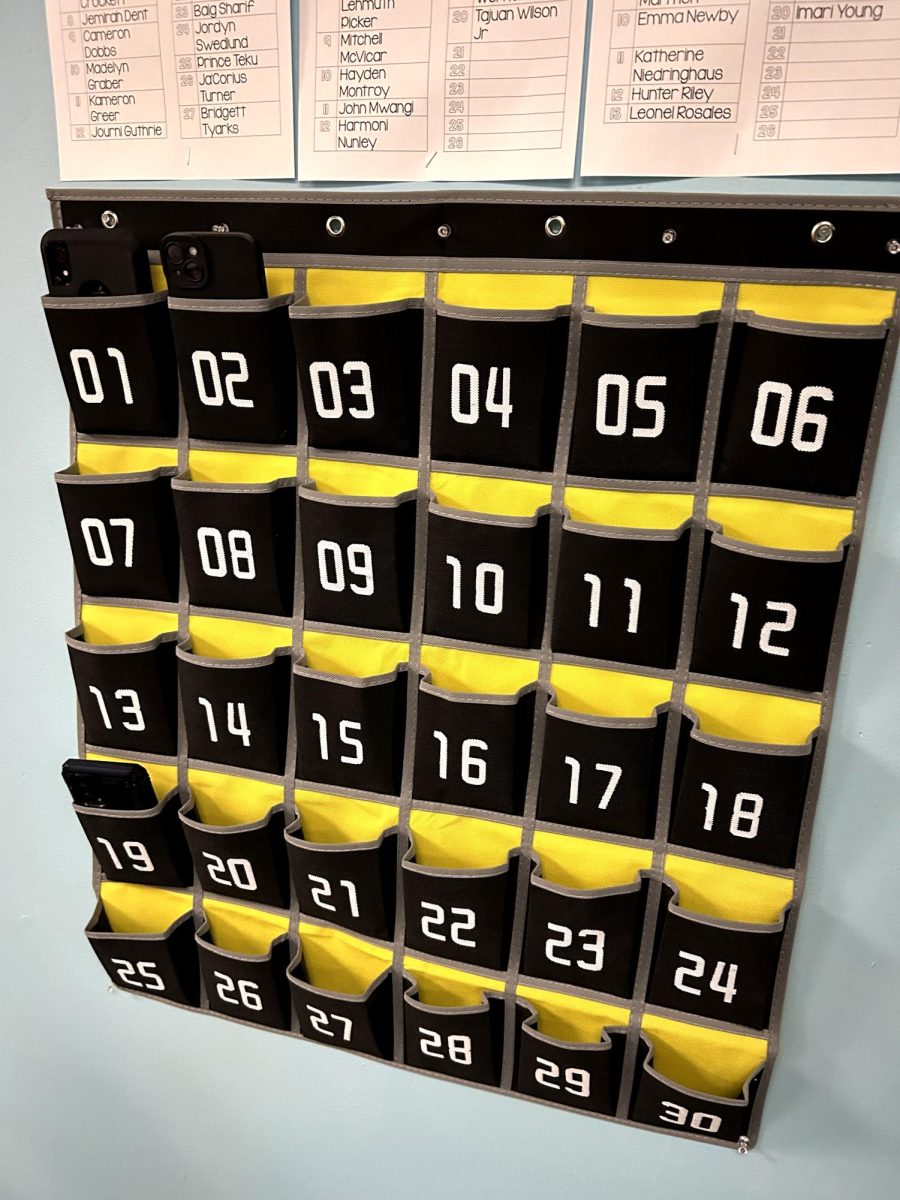
Pattonville High School’s new phone policy, introduced this school year in response to Missouri’s Senate Bill 68, is changing how students learn and interact– cutting distractions while encouraging face-to-face connection.
Under the new rules, students must keep their phones put away from 7:23 a.m. to 2:18 p.m. during the school day. The goal is to reduce distractions, increase academic focus, and promote more social interaction.
Sarah Hollstrom, an English Learner (EL) teacher at Pattonville High School, said she’s already seeing the difference.
”It’s incredible. I love it, 100%. I really appreciate that because of this, I don’t have to get into arguments with students over their cell phones anymore.”
Hollstrom also said she’s noticed more genuine interaction between students in the hallways and commons.
”I am seeing a higher percentage of students interacting in the hallways rather than just having their heads bent over cell phones,” she said. “Even those small interactions help high schoolers practice social skills, which I think is a big positive.”
While many teachers support the new policy, they emphasize that its success depends on everyone following it equally. Consistent enforcement across all classrooms ensures that students clearly understand expectations and take the rule seriously.
“Not only in my own classroom, but consistency across the school… a policy is only as strong as we’re willing to enforce it,” said Hollstrom. “If one person is not enforcing it to the same degree as someone else, then you lose a lot of power in that policy.”
Other staff members have also noticed changes. Macie Baucum, a math teacher, said test performance has improved in her classroom since the policy was introduced.
“Last year, the average for my Chapter One test in Algebra was [about 60], and this year the average was [about 70],” Baucum said. “For an average to go up 10 percent is significant. They’re actually doing the work now instead of just cheating, which is helpful.”
Some teachers, however, noted that the policy presents challenges for extracurricular communication.
“I’m having less issues with grades this year so far, so I think it’s really helping,” Danelle Emerick, a social studies teacher, said. “Maybe the downside is that it’s kind of hard to communicate with my team now, but for the most part, I think it’s a really good thing.”
Emerick also said the restrictions are improving her classroom relationships.
“I feel like my relationships with students have grown at a much quicker rate this year than in the past because they’re forced to talk to me and to each other,” she said. “There’s a lot of good communication going on in class, which makes it positive.”
Still, some students wish the policy allowed limited access for practical reasons. Senior Adonidja Ngandu said that while she sees the benefits, there are moments she misses having her phone.
”Sometimes I wish I could check messages, but I get why the rule exists,” Ngandu said. “It’s helped me stop getting distracted during class.”
Hollstrom acknowledged that one area could still use some fine-tuning.
“I would probably consider the headphones aspect,” she said. “I really respect the policy as it stands, and I have no problem enforcing it, but it’s a difficult balance to reward students using headphones academically while having consequences when it’s inappropriate.”
As the semester continues, teachers and students alike are learning to adapt. Many agree that while the policy takes some getting used to, it’s creating a calmer, more connected environment.
“Students are far more present in their classes,” Hollstrom said.






